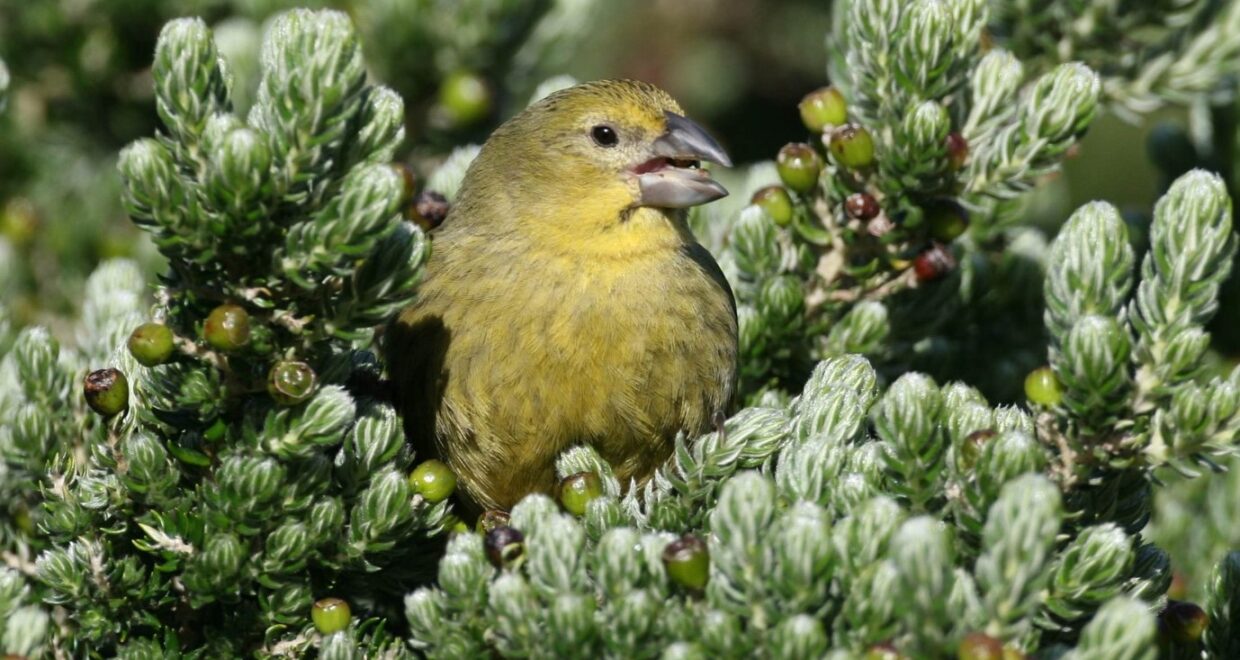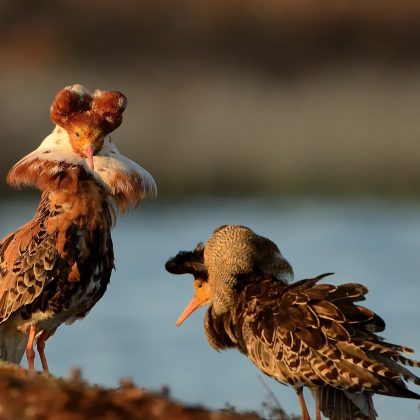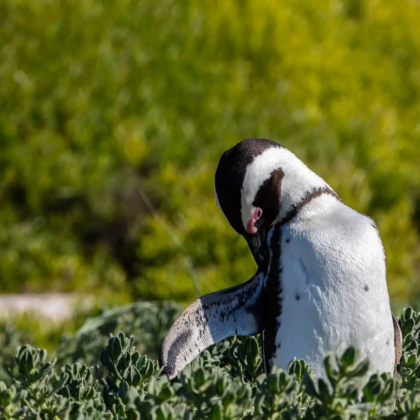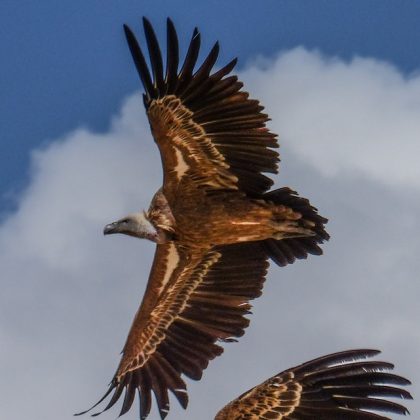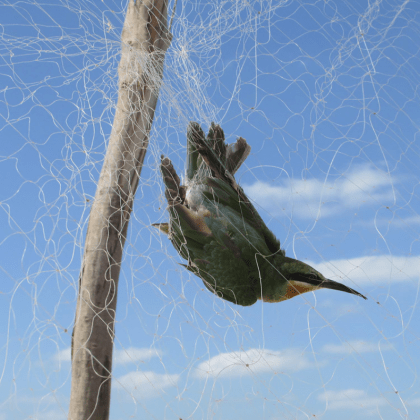Rare island finch threatened by extreme storms
The latest Paper of the Month for Bird Conservation International is The impact of storm-induced tree loss on the population of Wilkins’s Finch Nesospiza wilkinsi and is available as open access.
Wilkins’s Finch Nesospiza wilkinsi is arguably one of the naturally rarest birds on Earth. A comprehensive survey in 2016 and 2017 recorded 120 pairs, giving a total population of no more than 300 mature birds. The reason for their rarity is their specialised diet coupled with an extremely small global range. Wilkins’s Finch is only found on tiny Nightingale Island (2.5 km2) in the Tristan da Cunha archipelago, where it occurs with the much more abundant Nightingale Finch N. questi. Wilkins’s Finch differs from its smaller relative in having evolved a massive bill to crack open the fruits of Island Trees Phylica arborea, which are the only large woody plant on the island. These fruits take a year to develop, and thus provide a reliable year-round food supply for the finches. Each breeding territory includes some trees, which are scattered in copses of varying size among the dominant Spartina arundinacea tussock grass.
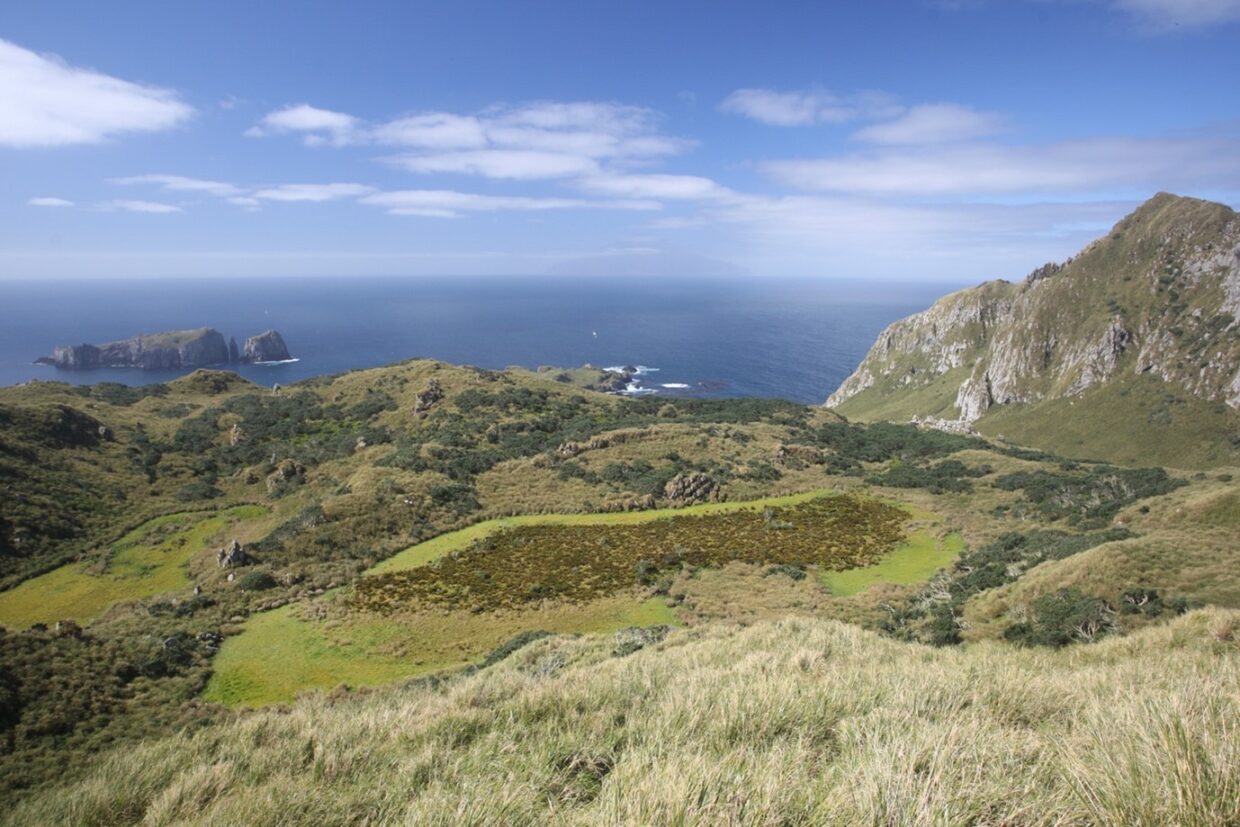
Nightingale is one of the few temperate islands to have escaped having any introduced mammals, and only a few introduced plants. Unfortunately, two cosmopolitan scale insects, have reached Nightingale after being accidentally introduced to the main island of Tristan. The arrival of Brown Soft Scale Coccus hesperidum in the 2010s is especially worrying, because it greatly reduces Phylica fruit loads and can even kill large trees. Fortunately, the Royal Society for the Protection of Birds has led a project to release a biocontrol agent to limit the scale insect’s impact.
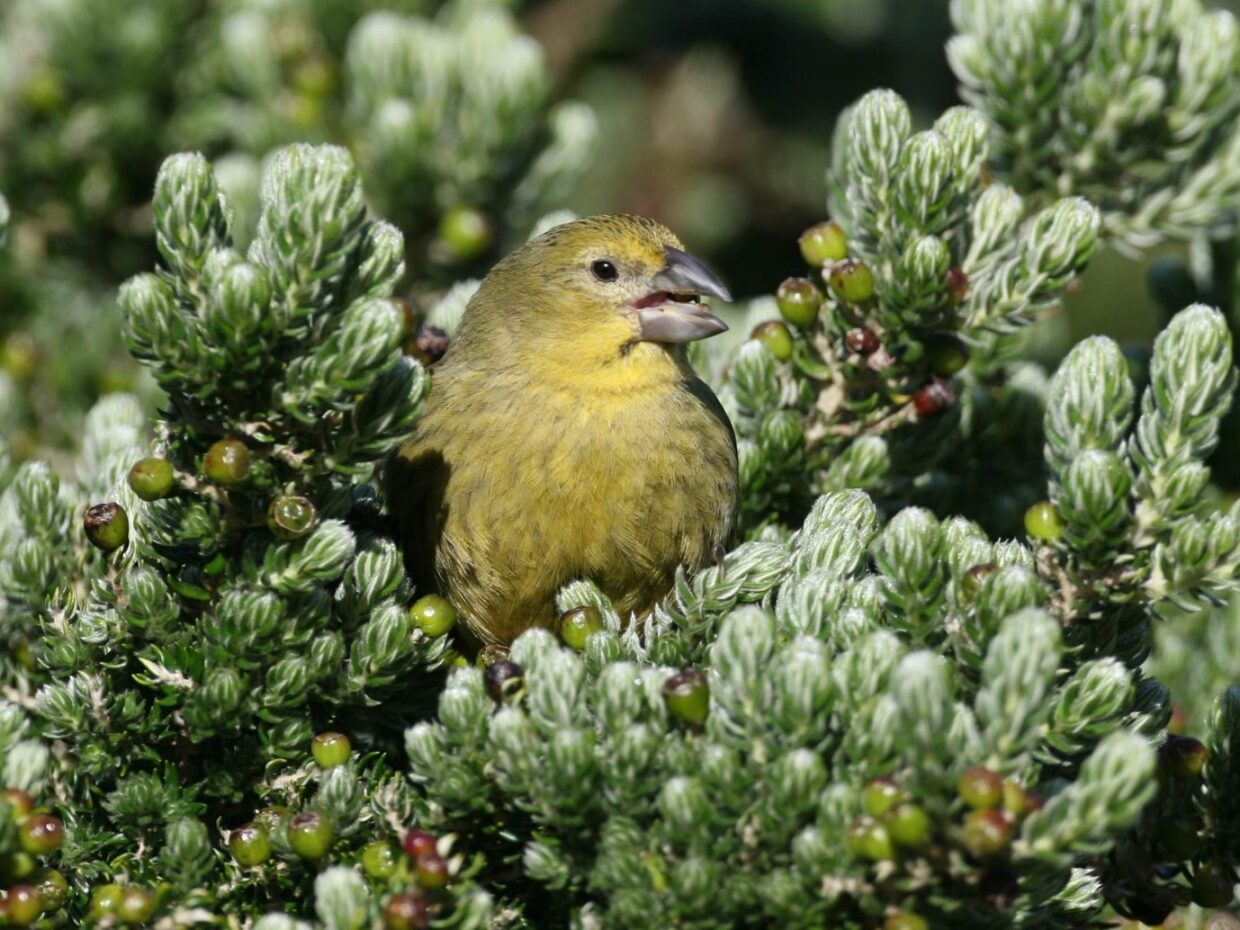
However, in 2019, two severe storms struck the island, felling most trees in the largest patch of woodland. Initial observations indicated that only a handful of Wilkins’s Finches survived. In February 2024, Coleen Moloney and I spent a week on the island to assess the situation. Our findings can be found in the latest issue of Bird Conservation International (Ryan et al. 2025), indicate that although the number of Wilkins’s Finch territories has decreased dramatically in the area of woodland hardest hit by the freak winds, many other copses were little affected by the storms. We estimated the finch population to be at least 60 pairs, which is similar to the estimate prior to the 2016-17 survey.
Historical satellite imagery suggests that another severe storm in 2001 had a similar impact on woodland cover, and so the population of Wilkins’s Finch probably fluctuates in relation to the extent of woodland habitat. Of concern now is if global warming causes an increase in the frequency and/or intensity of extreme storms at the island. A programme to plant woodland patches in sheltered areas would help to offset future storm damage.
The paper “The impact of storm-induced tree loss on the population of Wilkins’s Finch Nesospiza wilkinsi“, by Peter G. Ryan, Coleen L. Moloney, Ben J. Dilley, Trevor Glass and Andy Schofield, published in Bird Conservation International, is available as open access.
